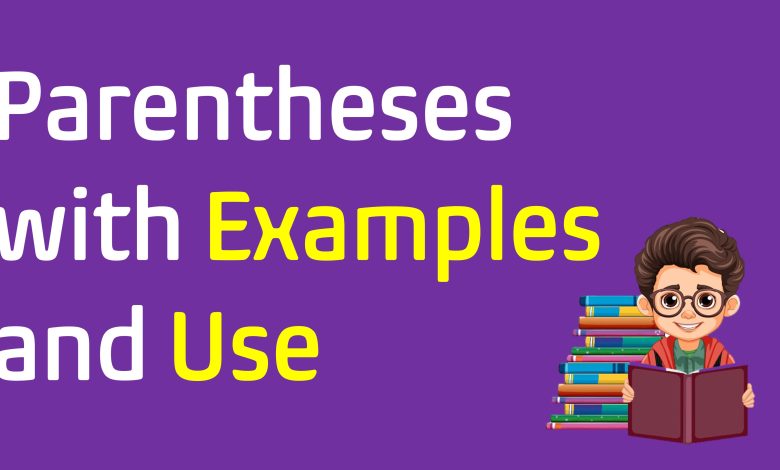Parentheses with Examples and Use

Parentheses ()
Definition: The sign (), which is usually used to separate unnecessary things in a sentence, is called parentheses.
Note: In British English, parentheses are also called brackets; and they are also called “round brackets”.
Singular: Parenthesis.
Plural: Parentheses.
Note: Parentheses [(), (). ()] are plural of parenthesis. [()].
The usages of parentheses:
(1) Parentheses are used to close the grammatically unnecessary words and phrases.
ex
He is older than I (am).
You can use double inverted commas inside the single (inverted commas) or (you can) use single inverted commas inside double (inverted commas).
(2) Note: Parentheses are used to close the serial numbers of items/ examples in series. Note: Full stops are also used after numbers of items or examples in a series.
ex
A: examples
(1) or 1. He is playing football.
(2) or 2. She is helping him.
B: Series of items
Bring me the following things:
(1)/1. a bar of soap.
(2)/2, a dozen of eggs. (3)/3. a dozen of bananas.
(4)/4. a packet of blades.
(3) Note: Some modern writers use a single parenthesis, especially in informal written matter in number of items.
ex
Bring me the following things:
1) a bar of soap.
2) a dozen of eggs. 3) a dozen of bananas.
4) a packet of blades.
(3) Parentheses are used to close the references.
ex
We will complete this project within fifteen (15) days. He will come within twenty (20) minutes.
(5) Alternatives can be put in parentheses. Note: Slash can also perform the same function.
ex
Who(m) do you want? OR Who/whom do you want?
Ali’s red car, door of which (or whose door) was broken, was brand new. OR Ali’s red car, door of which/whose door was broken, was brand new.
I wish (that) I were a doctor.
Note: Parentheses can be used like commas and dashes to separate the explanations and remarks when the explanatory material contains other marks of punctuation to make them clear and easy to understand.
Note: In such cases, use parentheses or dashes for clarity.
ex
Your ordered goods (glasses, jugs, plates, cups) have arrived. OR
Your ordered goods, glasses, jugs, plates, and cups, have arrived. OR Your ordered goods – glasses, jugs, plates, cups – have arrived.
Note: “Parentheses” can also be used to separate the unnecessary information or explanatory remarks as the commas do. The explanatory remark or unnecessary information can be a word, a phrase or a clause.
Note: In this case, commas are more common than parentheses and dashes.
ex
My red car (which was parked under the tree) was stolen last night. OR My red car, which was parked under the tree, was stolen last night. OR My red car – which was parked under the tree – was stolen last night.
If he dies (may God forbid!), I will die too.
Note: Remember that the unnecessary information or explanatory remark which comes inside commas or dashes or parentheses; the first letter of it is written in small letters; full stop does not come at the end of it and if it is an interrogative or an exclamatory sentence, question or exclamatory mark comes at the end of it, but again, the first letter of an interrogative and exclamatory sentence is written in small letters.
ex
My red car (which was parked under the tree) was stolen last night. My red car (did you see it under the tree?) was stolen last night.
Note: If the following matter (a sentence or a phrase) is in parentheses and if it is not part of the preceding sentence, it will have the usual rules:
(i) It will start with a capital letter.
(ii) It will have its punctuation at its end.
(iii) The punctuation mark will be inside the last parenthesis. ex
He has been to London before. (= He has visited London before.) She has already had lunch. (= She has already eaten lunch.)
Note: The words, phrases, or clauses which are grammatically unnecessary are put in parentheses in adjective clauses. ex
He is the man (who/whom/that) I met yesterday. Mr. Asif (who is ph.D. in his subject) is our new manager.
